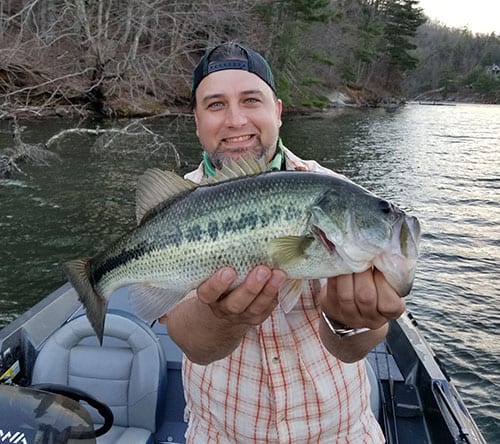Right now is the summer-to-fall transition and bass are corralling shad. When fishing the fall transition you’ll see bass all over the lake. Some bass have made the move and some are still on the summer pattern. When they are blowing up on the surface for forage then you’ll know the transition is happening. What do you do when this happens at your lake? You give them what they want.
All bass want something during a certain time of day and, as an angler, it takes more than casting and catching. We have to take clues that they give us and turn them into a plan or pattern. Everything is a clue and even the lack of clues, tell you something. Knowing the forage helps with determining where fish are and what behavior they display. If you’re in a pond, you want to fish with bluegill and crayfish. In a reservoir, the main forage is shad. These are good starting points and branching off from these will help you narrow down what fish want. If you don’t second-guess yourself with where the clues tell you to fish, then you may stumble onto a pattern that’s out of the ordinary.
Recently, I went fishing,on a bluebird sky day, and you could guess ahead that the bite would be slow and that you would have to fish slow. After cycling through lures, I had a feeling they wanted top water lures. I had followers on a glide bait and some takers on a wacky rigged senko, but they were blowing up aggressively on the poppers and walking bait at mid day. It didn’t make sense but I went with it and had some nice catches, not to mention how pleasing it was to the senses, to watch your lure getting devoured.
To help with the location of bass, you really need to know what’s going on with the environment, such as water temp or weather blowing in. Cool nights at the end of summer will kick in with the fall transition and all the shad start filing in like a conveyor belt into the creek mouths. You start seeing activity associated with the fall pattern but other quality bass are being caught with a summer pattern, such as fishing docks, lay downs, and ledges. In some places, the grass has grown just a few feet from the surface and you can find quality fish there as well.
Pretty soon, the summer pattern bite will die down and the reactive bite starts to take over. Fish start wanting to chase their food. The bass you see blowing up on the surface are usually small while the larger and smarter bass are underneath these bass feeding on the injured shad for an easy meal. Large bass do not like burning calories for a small meal so using the small bass to serve them an easy meal is smart. They bulk up for winter much faster than the chasing bass.
Having a good plan will help your fishing be productive. Good luck this fall and I hope you catch the fish of a lifetime.
Scott Norton is a native of Western North Carolina. Born in Asheville, NC, he is a long time avid hunter, angler, and weekend warrior. He is a member of Southern Raft Supply’s prostaff team representing them in his Jackson Kayak Coosa FD.
